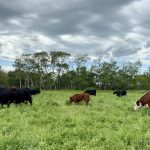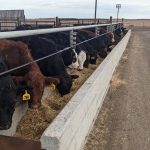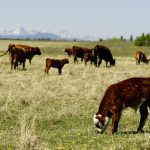
Picking the most efficient cows to rebuild your cow herd
A new cow ranking system to help beef farmers and ranchers pick the most efficient cows as they rebuild their herds

Preg-checking season is the perfect time to re-evaluate your beef cows’ nutrition
A look at three critical minerals that are often deficient in Canadian beef cow herds

Making the most of screenings, fines and straw in beef cattle diets
Considerations for incorporating agri-food by-products such as oilseed fines into the diets of feedlot cattle

Rye silage: From the field to feedlot
Nutrition: Evaluating how barley silage and rye silage compare in feed quality

Researchers examine yeast supplements in beef cattle diets

Rethinking transition diets for finishing cattle
Feed additive shows promise for accelerating dietary transitions in feedlot cattle

Reducing ration sorting by feedlot cattle
Cattle sort their feed based on a variety of factors

Benchmarking: A path to better practices in the Canadian beef industry

Winter feeding tips for beef cows in late gestation
Transitioning late gestation cows to higher-quality forages is a good strategy




